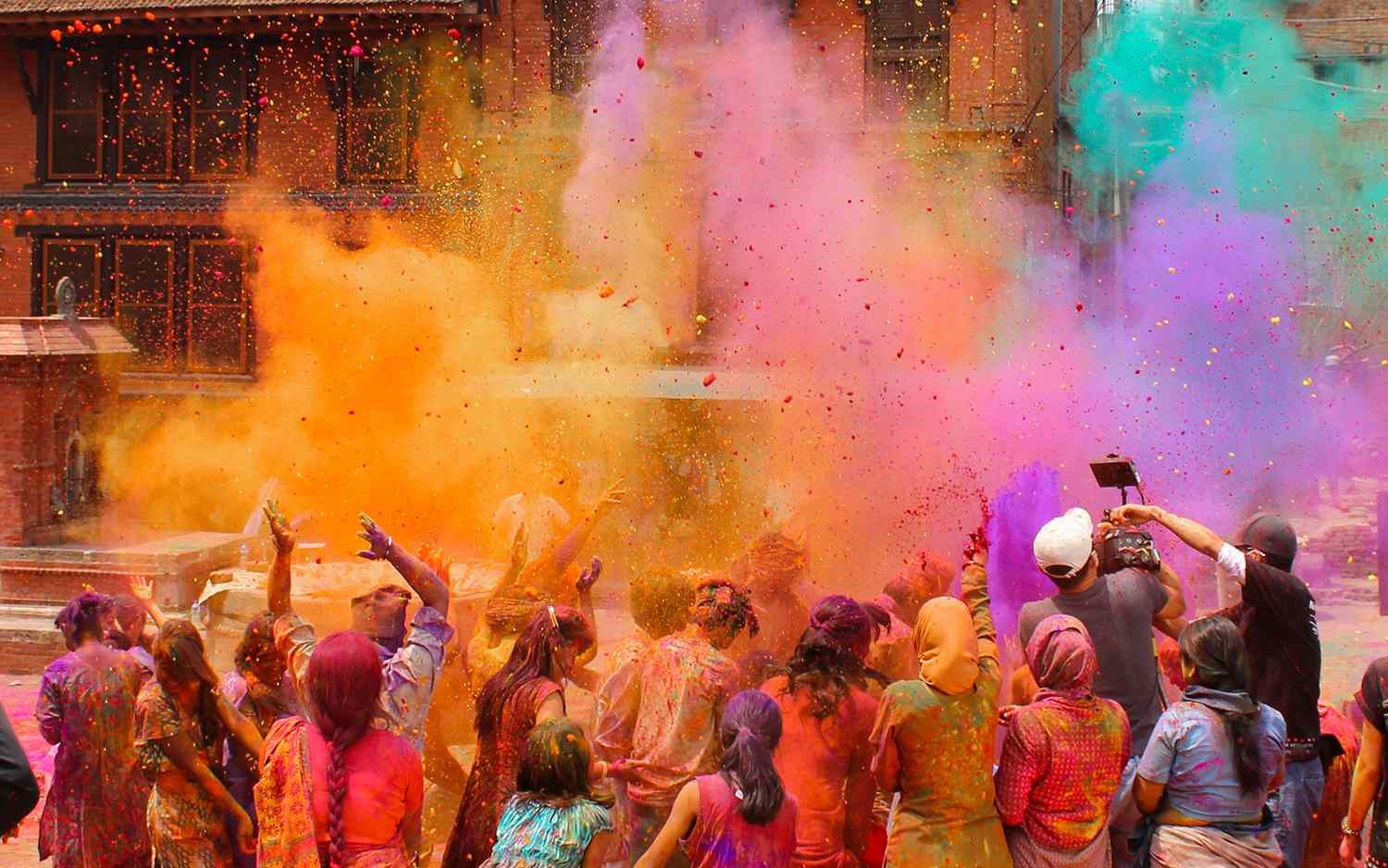Festivals bring joy and happiness, especially in a country such as India with so many diverse cultures. Though these celebrations bring enjoyment and prosperity to people, they are nothing less than a nightmare for the environment.
Whether it be playing with synthetic colours on Holi or igniting fireworks during Diwali, all these practices impact Mother Earth and damage our world, bit by bit. However, that doesn’t mean we stop celebrating.
Instead, we must implement eco-friendly ways to save our planet and continue enjoying our festivals.

Holi is one of the most auspicious and vibrant festivals celebrated in India. The festival is celebrated by lighting a bonfire a day before the actual festivities, which signifies the triumph of good over evil. The splash of colours and water fights mark Holi and spread positivity among the people.
On such an auspicious day, it is our prime duty that along with the festivities, we also keep the environment’s well-being in mind.
One of the best ways to do so is by replacing synthetic colours with colours made from natural dyes. These colours can be made with turmeric, henna, chandan and other organic substances.
Avoidance of plastic balloons and water guns is also recommended. The best alternative would be to steer clear of water altogether. Another great way to celebrate this wonderful holiday would be to enjoy the celebrations with flowers instead of the usual colours.
Ganesh Chaturthi is a 10-day festival that marks the birth of Lord Ganesh, the mighty elephant God. During this festival, Lord Ganesh is celebrated as the god of wisdom, intelligence, and new beginnings. Idols of Vinayaka are submerged into water bodies to signify his birth cycle and ensure his return home after visiting his devotees on Earth during these 10 days.

While this is a charming ritual during which crowds of people gather near rivers, singing and dancing, the entire visarjan (immersion of the idol into the water) process is responsible for a significant amount of noise pollution and leads to water contamination.
To prevent such circumstances, the figurines should be made of environmentally safe materials like clay, which dissolve quickly in water without contaminating it. Moreover, the idols should be painted with natural dyes to avoid harming aquatic life in the water bodies. Similar practices can be implemented during Dussehra as well.

Diwali is the Indian festival of lights. During this festival, houses are lit with diyas and cities shine bright while people run around the streets, burning firecrackers.
Although setting off rockets and dancing around flower pots is what children look most forward to on Diwali, the amount of air pollution caused due to these activities has reached extreme heights.
It is not possible to completely boycott the use of firecrackers as they bring joy and are a symbol of hope to people, especially children, but their utilisation can definitely be minimised. Firecrackers are hazardous to our health and the environment. They are also responsible for noise pollution caused in cities. That being the case, they should be avoided as much as possible.
Another problem caused during Diwali is the use of synthetic colours to make pretty rangolis in our homes. The artificial colours are extremely harmful if inhaled and can also cause significant health issues. Along with this, they also damage our biosphere.
Raksha Bandhan-The new and upcoming trend for Raksha Bandhan at the moment seems to be gifting plantable rakhis.

This intimate festival symbolises the everlasting love shared between a brother and sister, where blood relation is not always necessary. On this particular day, a sister ties a rakhi around her brother’s wrist, wishing him prosperity and in exchange the brother vows to protect her and ensure her safety.
The introduction of plantable rakhis to this festival is a very innovative and enjoyable way to contribute to environment conservation. These quirky rakhis are made of organic cotton yarn and are embedded with seeds that eventually become plants when given proper care.
Plantable rakhis are not only an inventive way to promote planting more trees but are also fashionable and trendy.

Conclusion:These are just a few of the festivals celebrated in India that can be harmful to the environment. During festivities, people defile the atmosphere and poison water bodies, indifferent to the damage caused by their actions.
Good times should always be celebrated with extravagance and every moment should be savoured but not at the cost of our world. Because without the very planet that we live on, we won’t be able to experience anything ever again.
Our environment will always be in turmoil unless we interfere and find ways to stop its degradation. It is time that we humans start thinking about the consequences of our actions and join hands in saving Mother Earth before it is too late. Implementing eco-friendly ways to celebrate festivals is one step forward to achieving this feat.

